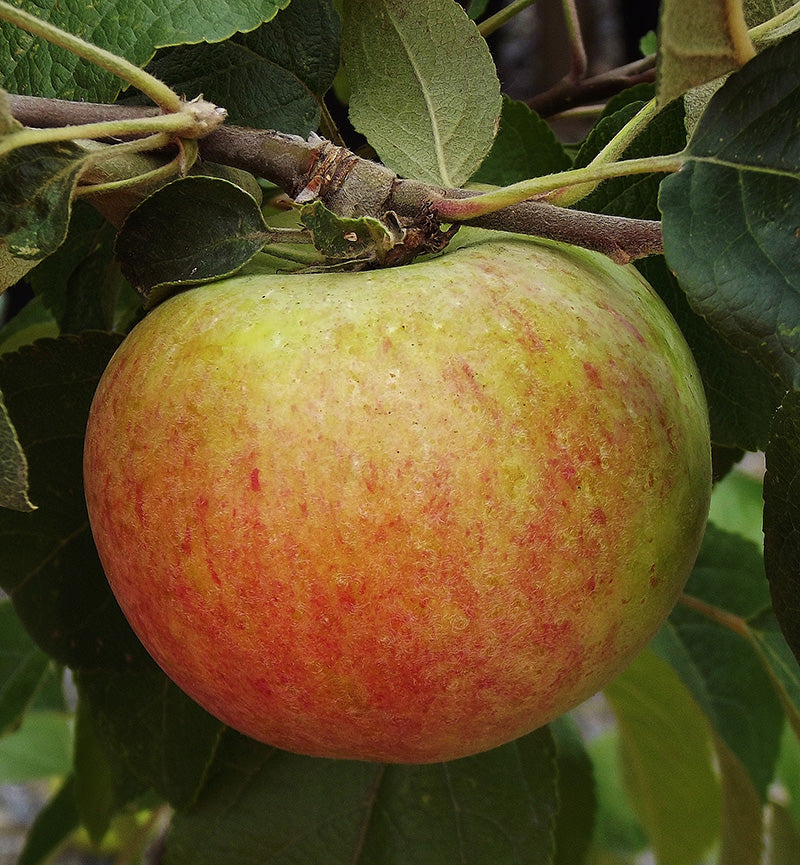
(Malus domestica 'Gravenstein')
The sex lives of fruit trees and berries can be complicated at times, with some species having separate male and female cultivars, while others have perfect flowers (with both male and female organs). Then there are those with unique male and female flowers on the same bush, such as Hazelnut. Add to this the fact that many fruits and berries with perfect flowers still require pollen from a different variety in order to produce, an act called cross-pollination. Quite often this leads to some misunderstandings.
Here's an example: I had a customer enquiring why his ‘Gravenstein’ apples weren’t producing despite being sold two of them by another nursery. The problem is that this variety has three sets of chromosomes making it a triploid, which in layman’s terms means that it is essentially sterile and incapable of fertilizing itself or any other apple for that matter. The solution here was planting a self-fertile apple that blooms during the same flowering period to provide pollen for itself and the ‘Gravenstein’.
The most common question I encounter with people buying fruits is Do I need two of them in order to get fruit? I generally answer by pointing out that some varieties are self-fertile while others require a pollination partner that is a different cultivar that blooms at the same time. And even self-fertile varieties will benefit from cross-pollination by producing larger individual fruits or berries, as well as higher overall yields. But with planting spaces getting smaller and smaller that isn’t always a possibility, so I thought I would provide gardeners living with those restraints with a concise guide to self-fertile varieties.
Apples (Malus domestica)

(Malus baccata 'Dolgo')
Your best bets here are ‘Cortland’, ‘Gala’, ‘Golden Delicious’, and ‘Spartan’, although a multigraft with 3-5 different varieties spliced onto the same tree will also work. The crabapple ‘Dolgo’ is also an excellent self-fertile choice that helps with apple pollination, and the fruits make an excellent jelly.
Peaches & Nectarines (Prunus persica)

(Prunus persica 'Frost')
All peaches are self-fertile and bear well on their own, but here on the "wet coast" you are going to want to choose a cultivar that is resistant to peach leaf curl such as ‘Frost’ or ‘Redhaven’. Nectarines are equally self-fertile but also prone to peach leaf curl, although there are genetic dwarfs such as ‘Golden Prolific’ that only grow 4-6’ tall and work well in containers, such as the one in my backyard that sits in the sun under the protection of a deck.
Blueberries (Vaccinium)
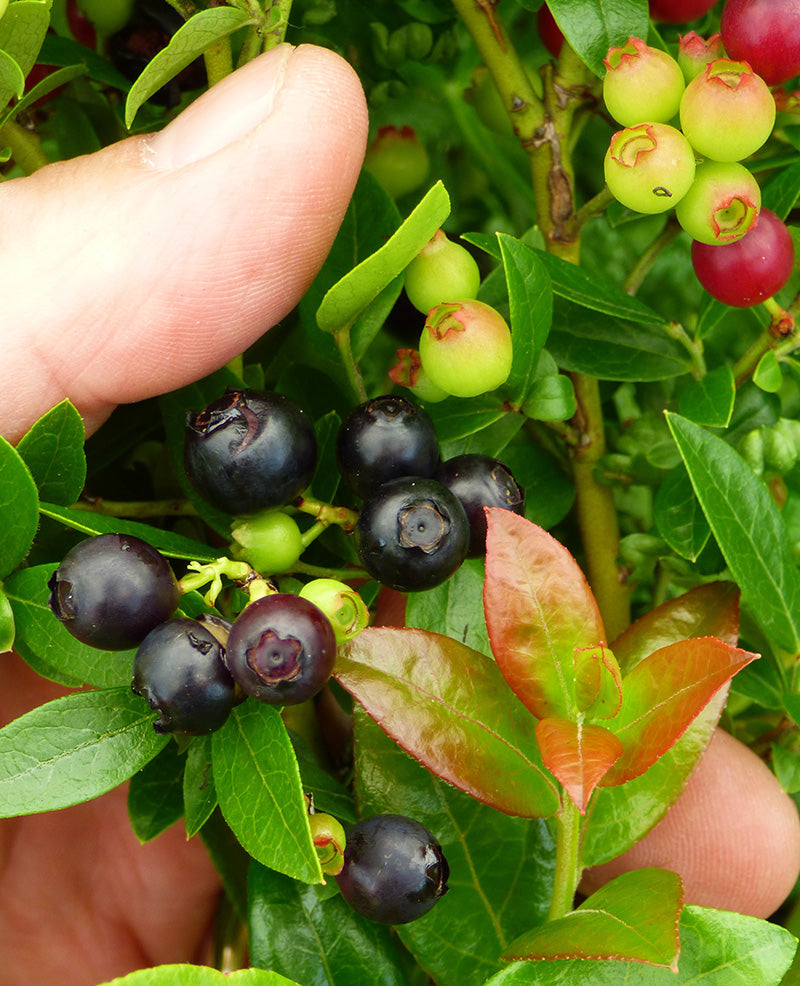
(Vaccinium 'Blueberry Glaze')
Most blueberries are self-fertile but some hybrids such as ‘Pink Lemonade’ produce very sparsely without cross-pollination. Berry size and yields do increase substantially with cross-pollination but if you have limited space, you can plant two different varieties side by side to grow together or consider one of the hybrid Bushel & Berry series such as ‘BerryBux’ (formerly known as ‘Blueberry Glaze’) which has performed well in my garden by itself.
Sour Cherries (Prunus cerasus)
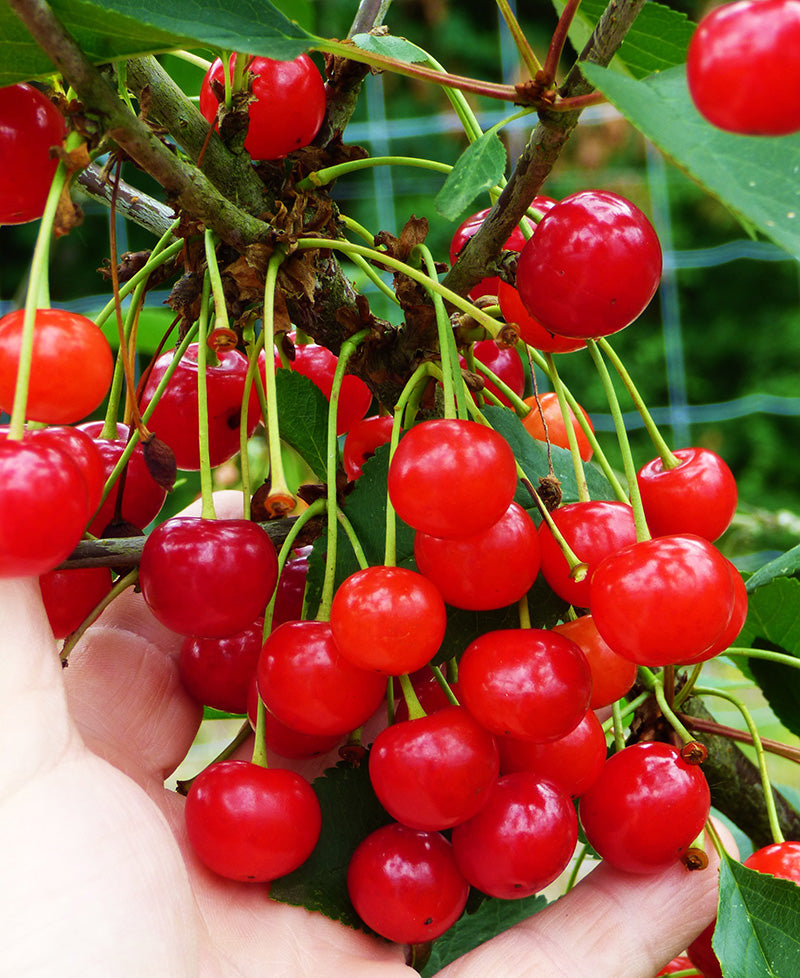
(Prunus cerasus ‘Montmorency’)
All true sour cherries such as ‘Montmorency’, ‘North Star’, and ‘Morello’ are self-fertile, but if you are looking to minimize growing space or plant in a container then consider the hybrid (Mongolian / Sour Cherry) Romance series such as ‘Romeo’, ‘Juliet’, and ‘Cupid’ which are self-fertile and only grow about 6-8’ tall.
Sweet Cherries (Prunus avium)
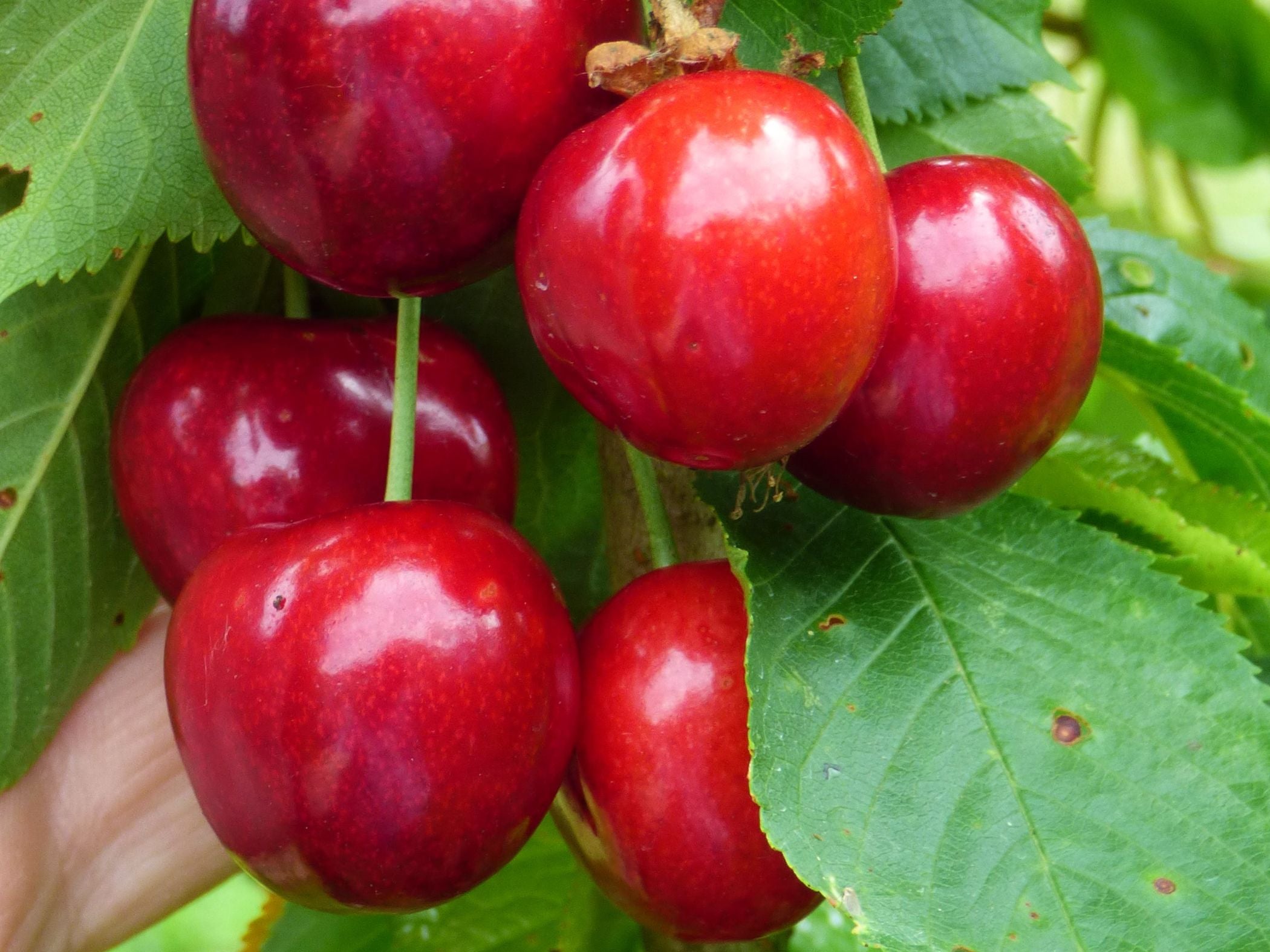
(Prunus avium 'Lapins')
Your best choice here is definitely ‘Lapins’, which produces a large dark cherry that is split-resistant, but ‘Compact Stella’ (smaller tree), ‘Sweetheart’, and ‘Staccato’ all crop well here on the coast. Where your luck runs out is with yellow cherries such as ‘Rainer’ or ‘Royal Ann’ both of which require cross-pollination, although these are often found on self-fertile multigrafts.
Plums (Prunus domestica / salicina)
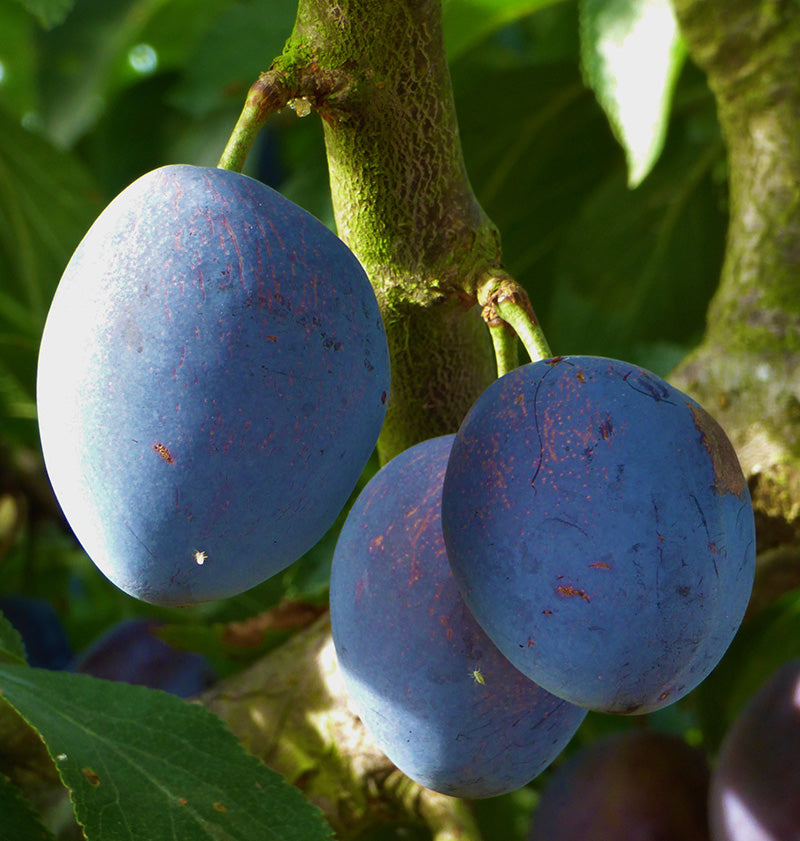
(Prunus domestica 'Italian')
When choosing European plums (Prunus domestica), ‘Italian’ and ‘Damson’ are your bulletproof self-fertile choices with ‘Yellow Egg’ and ‘Green Gage’ being partially self-fertile. For Japanese plums (Prunus salicina) you will want ‘Santa Rosa’ or ‘Beauty’, with ‘Shiro’ being partially self-fertile, even though I have seen solitary trees crop heavily.
Figs (Ficus carica)
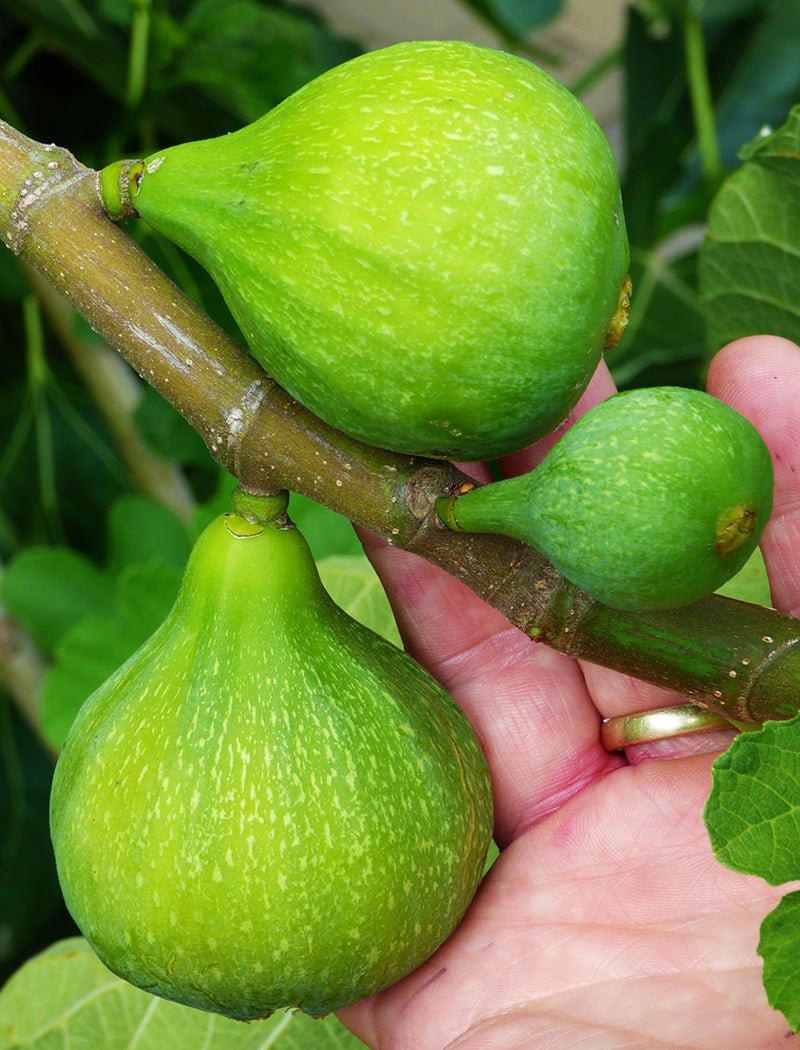
(Ficus carica 'Desert King')
All common figs are self-fertile with your better varieties for coastal weather being ‘Desert King’, ‘Brown Turkey’, and ‘Italian Honey’ or ‘Lattarula’. The second crop rarely ripens in our shorter summer and if you have been losing out the last few years on your first or breba crop, you can blame recent severe winter weather.
Currants & Gooseberries (Ribes)
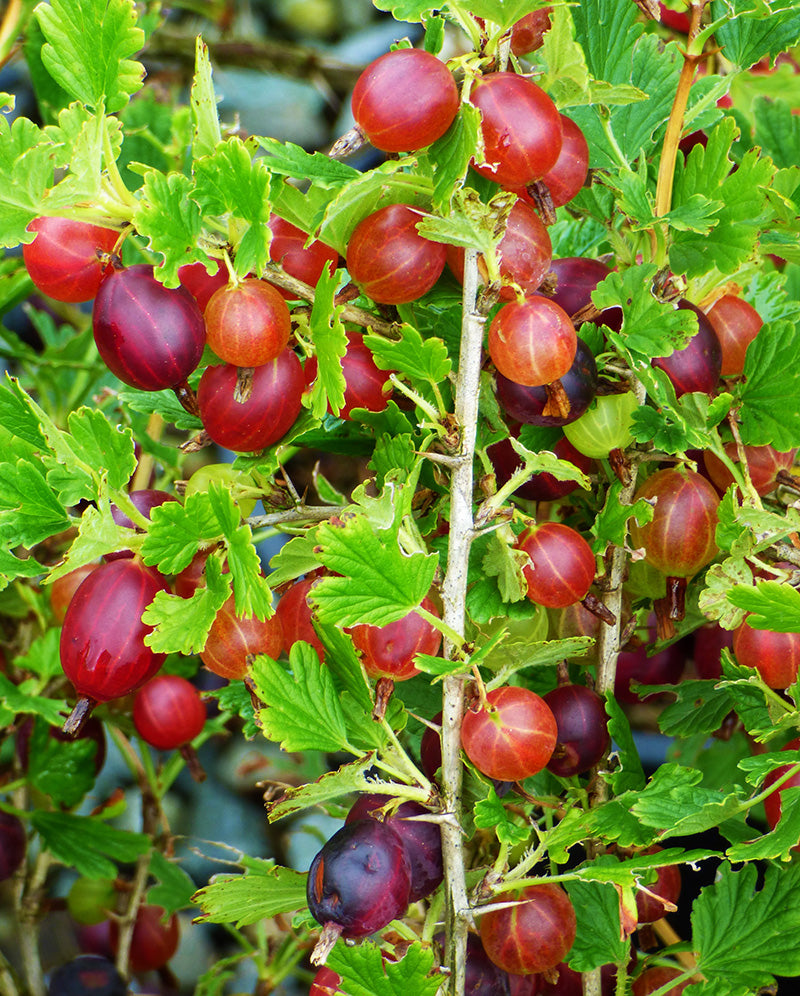
(Ribes uva-crispa 'Little Ben')
While most currants and gooseberries are self-fertile, cross-pollination really does increase your yield. For those with space issues try the dwarf gooseberry ‘Little Ben’ (Ribes uva-crispa) which only grows 2-3’ tall and wide.
European Pears (Pyrus communis)
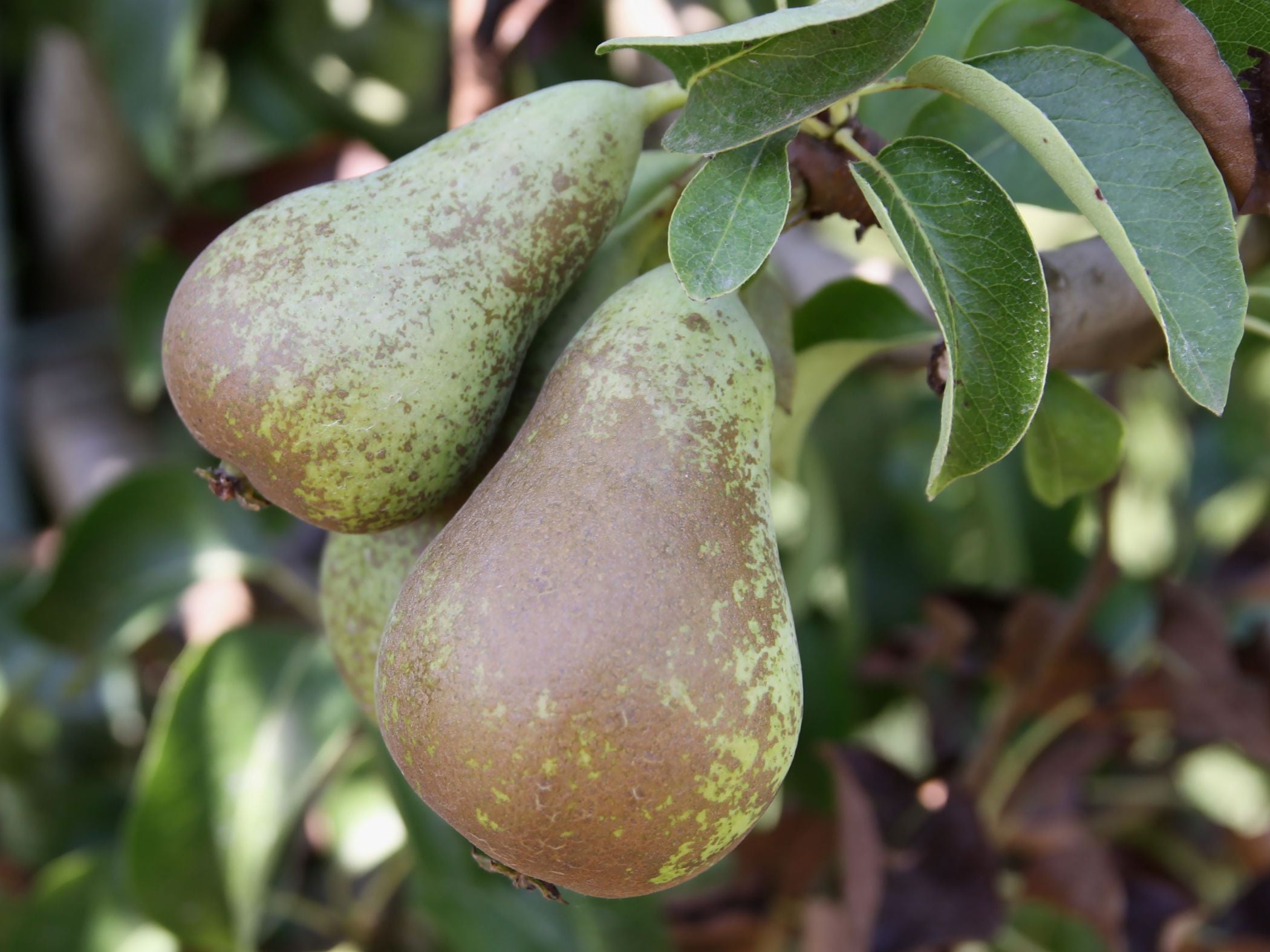
(Pyrus communis 'Conference')
The only commonly available European pear variety that is reliably self-fertile is ‘Conference’. ‘Bartlett’ is often listed as self-fertile but that is only in warmer climates such as California. Multigraft trees with three to five varieties can also work for those who only have room for one pear tree.
Asian Pears (Pyrus pyrifolia)
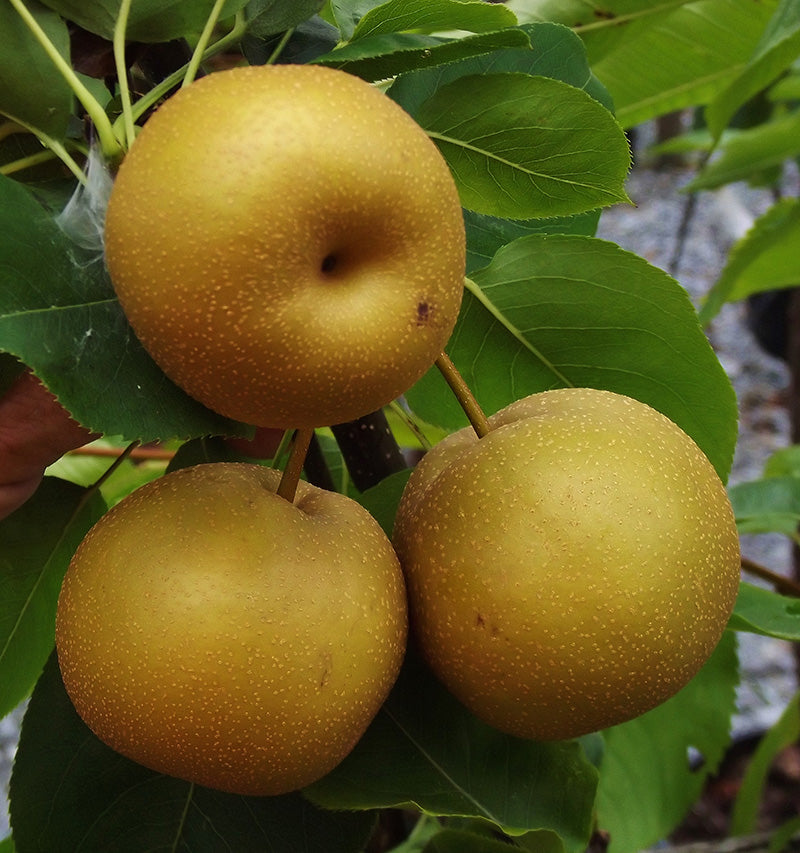
(Pyrus pyrifolia 'Chojuro')
Most Asian pears are self-fertile but tend to produce minimal crops in coastal gardens without cross-pollination. Multigraft trees are again an option here as well as a European pear that blooms at the time, as both are in the same genus and can pollinate each other.
Honeyberries or Haskaps (Lonicera caerulea)
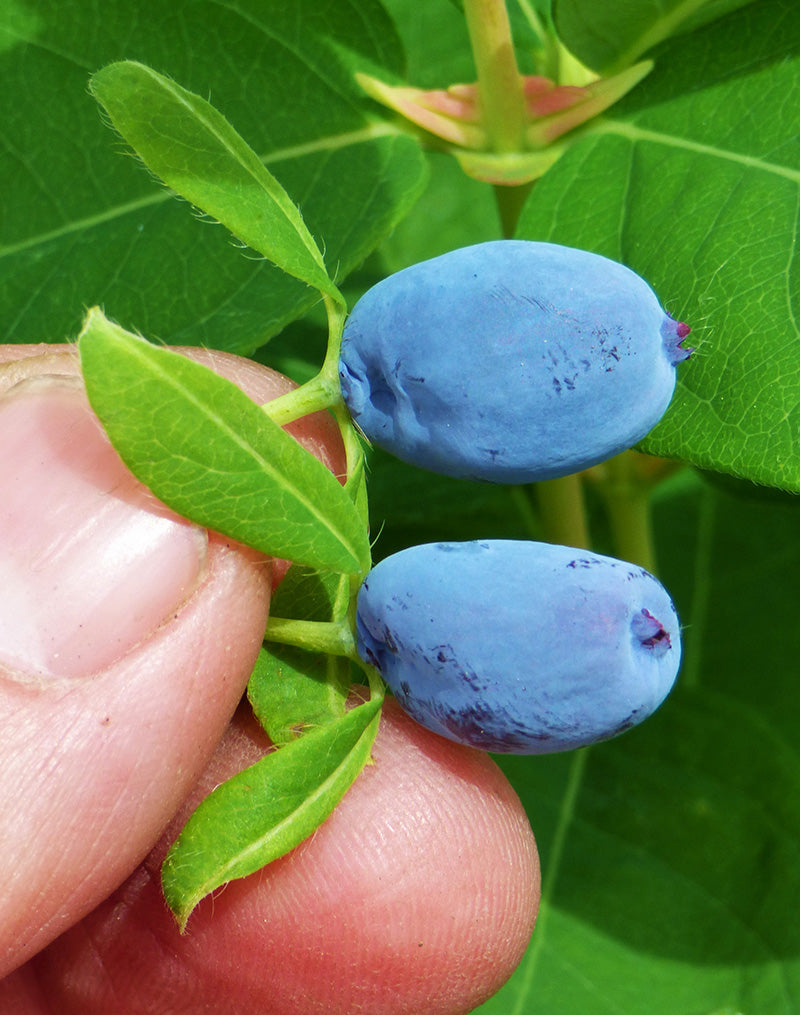
(Lonicera caerulea 'Solo')
All Haskaps or Honeyberries require cross-pollination from another variety that blooms at the same time with the exception of the Proven Winners variety ‘Solo’.
Raspberries (Rubus idaeus)
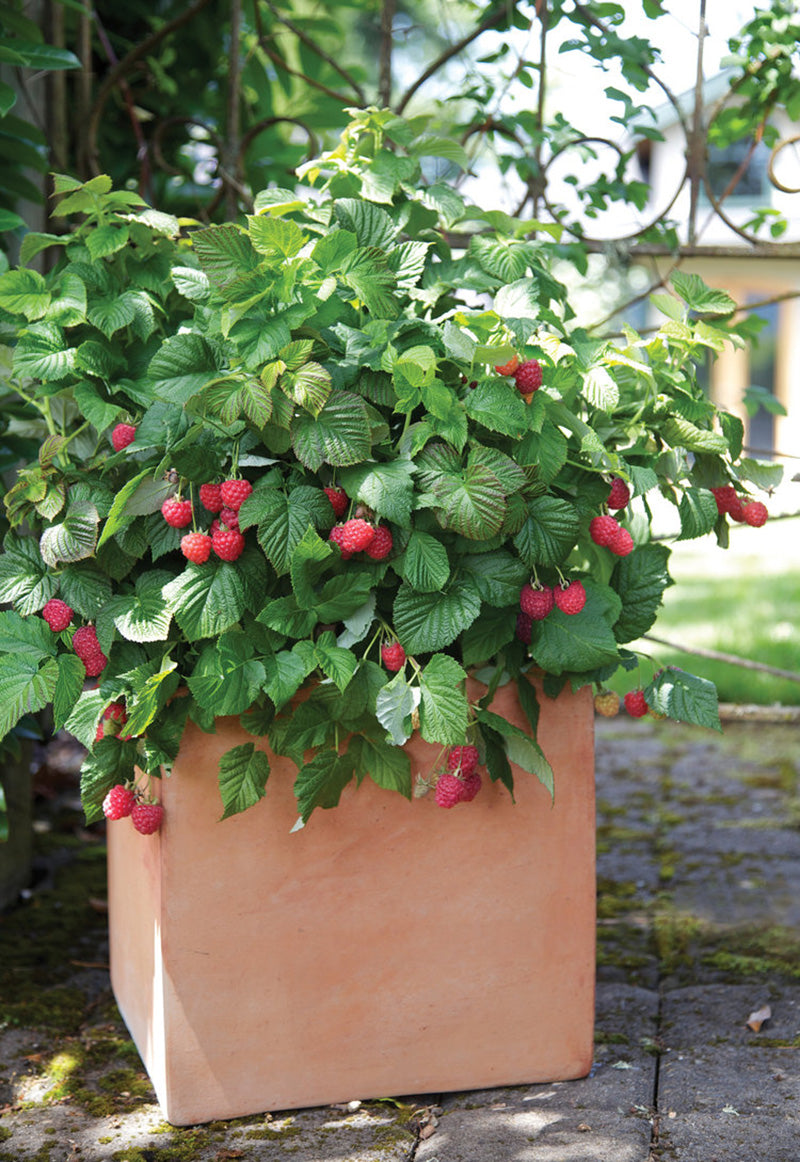
(📸 Star Roses & Plants | Rubus idaeus 'Raspberry Shortcake')
All raspberries are self-fertile but if you are looking to grow a space-saving variety, choose ‘Raspberry Shortcake’, a dwarf thornless cultivar.
Blackberries (Rubus fruticosus / plicatus)
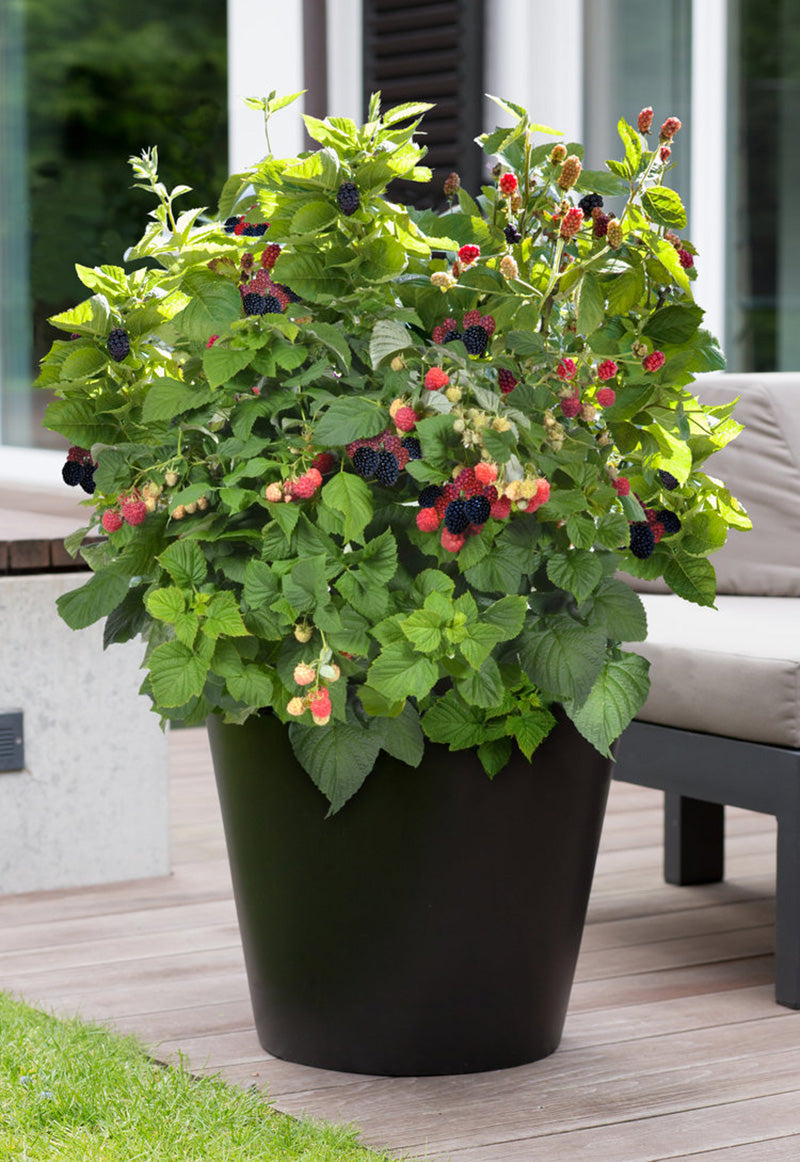
(📸 Star Roses & Plants | Blackberry 'Baby Cakes')
All blackberries are self-fertile but those looking to grow in containers, or a smaller space will want to plant ‘Baby Cakes’, a Bushel and Berry variety that only grows 3-4’ tall and is also thornless.
Strawberries (Fragaria)
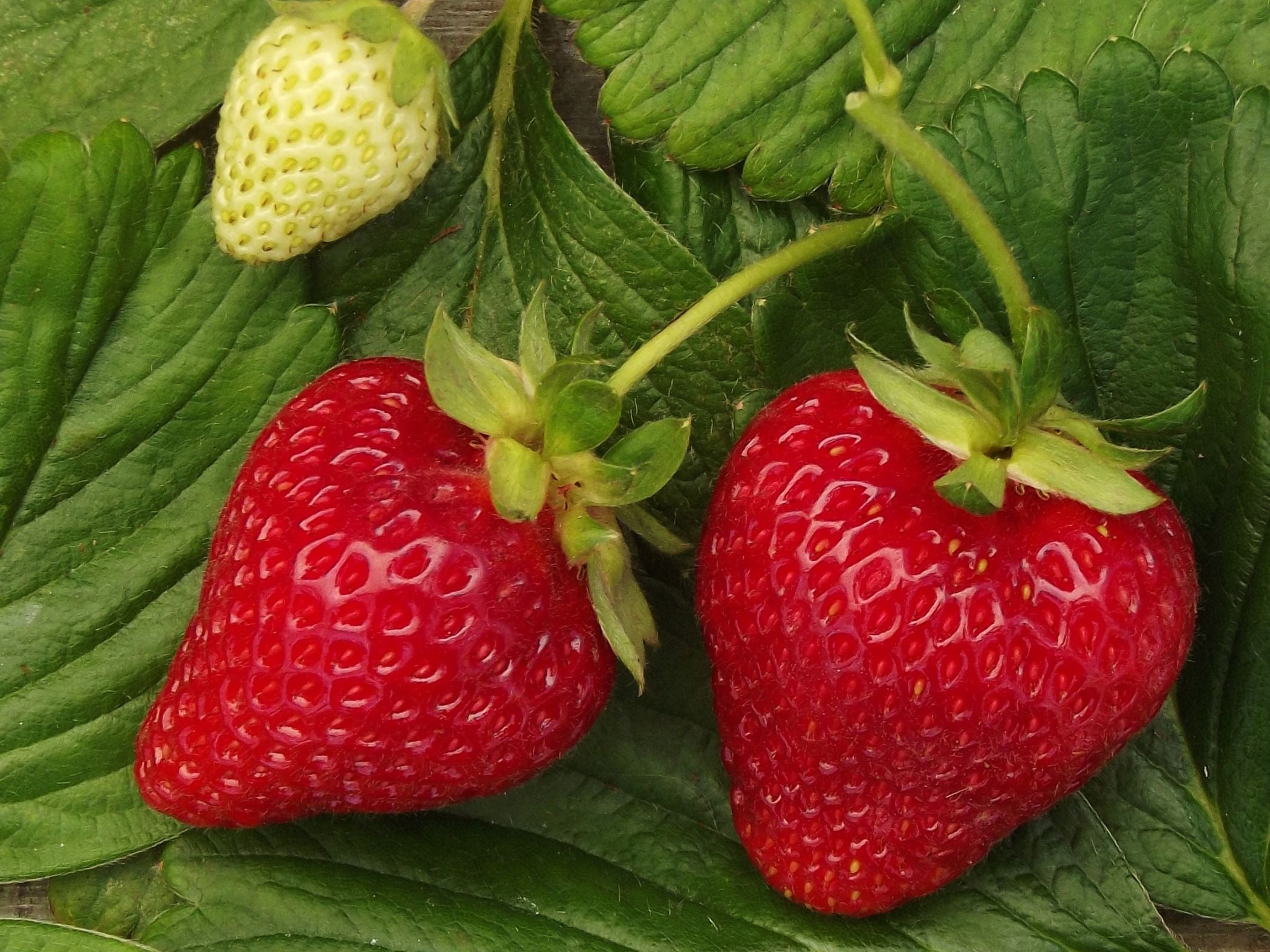
(Fragaria 'Albion')
Most wild (Fragaria vesca) and domesticated strawberries (Fragaria x ananassa) are self-fertile, like 'Albion', but some specialty varieties such as the white Pineberry require cross-pollination from another strawberry variety.
Kiwi (Actinidia)

(Actinidia chinensis)
This is a genus with separate male and female plants, although there are several options for self-fertile females. For the cold hardy kiwi (Actinidia arguta) you choose either ‘Issai’ or ‘Prolific’. Your choices narrow with Fuzzy Kiwi (Actinidia chinensis) with only ‘Jenny’ being readily available. It should be emphasized here that you will yield much larger fruits if you pair them with an appropriate male.
Grapes (Vitis)
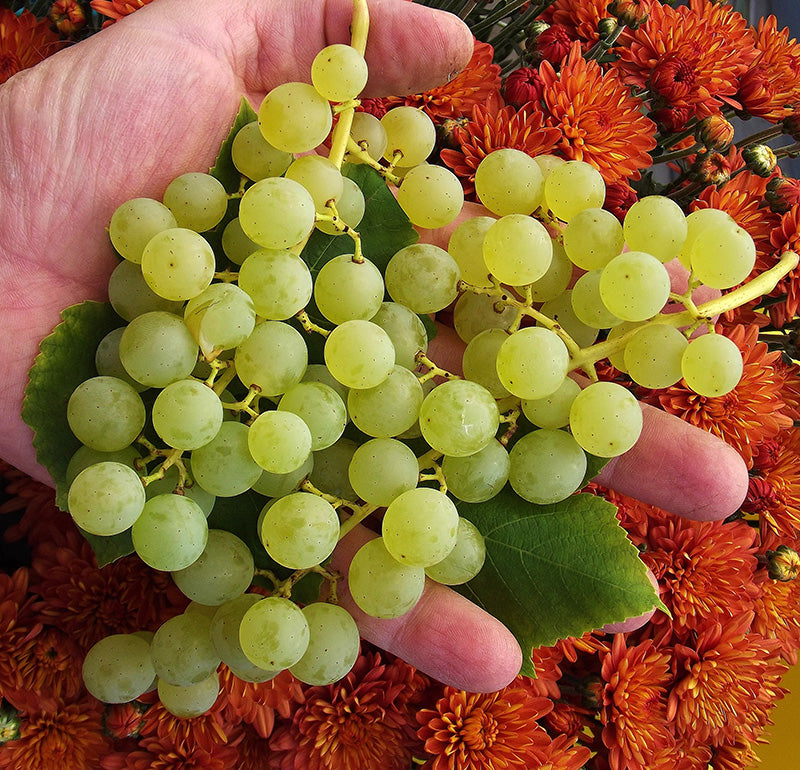
(Vitis 'Himrod')
Almost all of the grapes available at garden centres are self-fertile, so you really only need one vine. For coastal gardens you might want to choose ‘Himrod’ (green seedless), ‘Suffolk Red’ (red seedless), ‘Interlaken’ (yellow seedless), or ‘Black Monukka’ (black seedless).
I could go on and on listing self-fertile fruits and berries but a few more to consider include Medlars (Mespilus germanica), Mulberries (Morus), Chilean Guava (Ugni molinae), Saskatoon Berries (Amelanchier alnifolia), and Goji Berry (Lycium barbarum).



